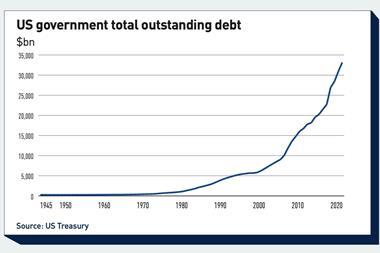Alternative investments like hedge funds, emerging markets like China are ever more frequent and important in US pension funds' portfolios, even though several red flags have been raised about their risks. The latest warning came in September with the bankruptcy of Amaranth, a hedge fund whose bets on natural gas prices went wrong and caused heavy losses to several state retirement systems that had invested in it. This failure apart, hedge funds' performances have not been very brilliant this year.
But apparently this is not making them change their plans to increase their exposure in investments that promise better returns. For example, after the Amaranth collapse came to light, the $7.7bn (€6.1bn) San Diego County Employees Retirement Association, which lost $105m of the $175m it had invested directly in Amaranth, decided to add another hedge fund (Highbridge Capital) to its portfolio. In the meantime the largest public pension fund in the US, the $210bn California Public Employees Retirement System
(CalPERS) has just announced it is evaluating whether to add China to its list of permissible emerging equity markets and it is focusing more on natural resources, notwithstanding the ‘bubble' level of their prices.
San Diego County's story explains why defined benefit (DB) schemes need risking more and chasing higher returns. In 2002, when the county's pension fund was still well funded, its board of supervisors decided to improve benefits and retroactively award them too, de facto encouraging hundreds of employees to immediately retire and take advantage of the new rules.
According to local papers' estimates, that move cost more than $1bn: to cover the gap the board obtained loans and invested the proceeds in hedge funds. Currently the San Diego fund has $1.5bn invested in 11 hedge funds, about one-fifth of its total assets, with plans for more. Thanks to these alternative investments, the 2005 return was 15.6%, higher that the 8.4% target. With the Amaranth flop alone, the San Diego fund lost 2% of its assets, but its supervisors defend their strategy: the 11 hedge funds in the plan's portfolio are ‘overlays', "spread like icing over the S&P 500 cake" to carry less risk than the stocks themselves, according to Laura Demarco, one of the board members for the San Diego pension fund.
While the San Diego County retirement scheme invested directly in Amaranth, other two public pension funds did it through funds of funds: the $43bn Massachusetts Pension Reserves Investment Management fund had about $56m invested in Amaranth through two funds of funds advisers, Rock Creek Group and Ivy Asset Management Corp; the $30bn Pennsylvania State Employees' Retirement System had money in Amaranth through a fund of funds run by Morgan Stanley and in whole has $7.1bn in hedge funds. After the Amaranth failure, both state funds' managers assured their members that the situation was under control and they would not change their commitment to alternative investments. On the contrary, the Pennsylvania fund confirmed it was about to increase its stake in hedge funds to $8.7bn.
San Diego, Massachusetts and Pennsylvania are not alone. Most (62%) of US pension funds that already invest in hedge funds intend to increase their allocations to this asset class, according to the new global survey by Mercer Investment Consulting, no matter the fact that only a minority (23% of a global universe of 181 schemes, polled before the Amaranth news) are satisfied with how their fund-of-hedge-fund investments have fared. In fact during the first nine months of 2006, the MSCI Hedge Fund Invest Index rose only 3.57%, lagging the MSCI World Equity index, which rose 11.44.
"The lack of satisfaction expressed by investors is likely to be due to a mixture of high expectations and fund managers not explaining their strategies clearly enough," commented Divyesh Hindocha, global head of investment consulting policy at Mercer. "While funds of hedge funds are attracting a great deal of attention, many investors are unclear about what they wish to achieve by investing in them, and what the funds can realistically deliver."
So far CalPERS has invested in hedge funds less than 2% of its huge portfolio, being been more committed to private equity. The new chief investment officer, Russell Read, former deputy CIO at Deutsche AM, has promised a radical change of the fund's strategy, looking for new sectors and products. He believes that commodities and natural resources, such as timber and energy, will be the most rewarding investments in the near-term, but he also thinks of adding China to its list of permissible emerging equity markets.












No comments yet